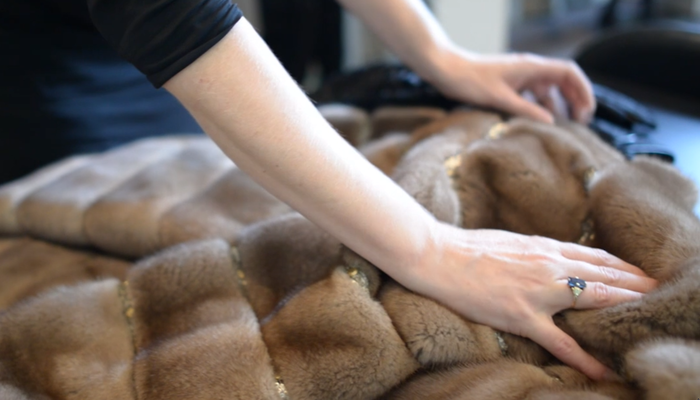Sustainable Dressing Draws International Interest

Brokers and dressing house representatives from around the world came out to stretch, feel, and see new advances in sustainable dressing on 3 May at a seminar in Glostrup.
Italian dressing house MIB, Greek DTS, and Asia-based Marco Cipel gave presentations and showed off test skins, moderated by Kopenhagen Fur’s in-house expert Thomas Andersen.
“We are very satisfied with our results. We are getting rid of some chemicals that are not banned by law, but my company wants to ban chrome just to be one step ahead,” said Roberto Tadini, the director of dressing house MIB (Manifattura Italiana del Brembo) as well as the President of the International Federation of Dressers and Dyers.
When dyeing skins, it is important they maintain their suppleness as well as their ability to be stretched when wet, but not shrink.
Yet the turnout from many international dressing houses showed that enthusiasm in sustainable dyeing is growing all over the world.
“I think Chinese dressing houses would be very interested in this,” said Linda Wang, who represents a dressing house in Chengdu.
New Ingredients
Some companies like DTS have also used new ingredients in their tests, such as probiotics, in places where traditional chemicals might be used.
“We use some probiotics to help the substances we use to be more reactive,” said DTS Factory Manager Dimitris Tzimas.
Since the underlying technology is available on licence from dressing supply companies, there is a good possibility for widespread use.
“We have shown that chrome-free can be done. We could be witnessing the beginning of a new trend,” said DTS Quality Coordinator Chrysostomos Kourkopoulous.
According to Roberto Tadini, The International Federation of Dressers and Dyers is also working toward establishing their own industry certification for sustainable dressing and dyeing techniques, which would avoid the use of chrome to help dye colours stick. It would also ban the use of formaldehyde.
“The goal is to have certified environmentally friendly dressers and dyers by 2020,” Andersen said. “We are in the beginning of a process to change methods in the dressing industry and I am sure that we will see more and better results in the future.”
